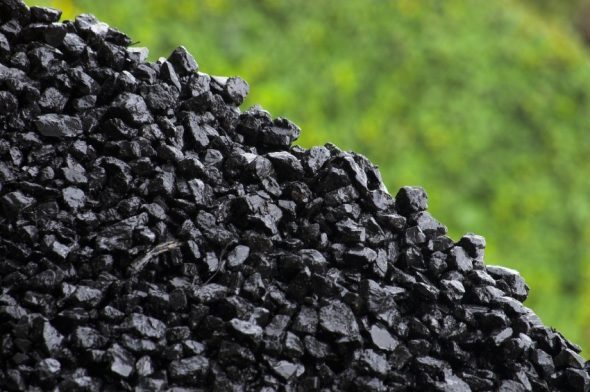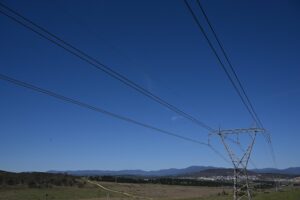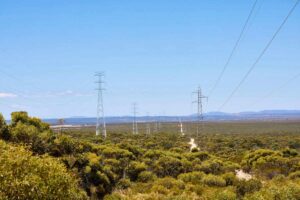AGL Energy on Wednesday completed the change in its colour-coded business model from green to black as it finalised the purchase of the Macquarie Generation black coal plants in NSW.
The purchase of 4.6GW of coal-fired generators in the Hunter Valley follows the purchase two years ago of the 2.2GW Loy Yang A brown coal generator in Victoria – the biggest single greenhouse gas emitter in the country.
It effectively turns the business model of AGL Energy on its head – from being the greenest of Australia’s big retailers, with the lowest emissions intensity, to the biggest owner of heavy-emitting coal-fired generation in the country.
And it gives the company a strong incentive to keep a carbon price at bay, and to see renewable energy target reduced.
“The removal of the carbon tax … has a materially positive impact on its (Loy Yang A’s) long-term value,” the company said in its annual results presentation on Wednesday. “Any reduction in the RET would also have a positive impact on the value of AGL Loy Yang.”
The purchase of Macquarie means that incentive to dilute the RET is multiplied threefold by the addition of that 4,600MW of coal-fired generators. Coal generators would find themselves increasingly sidelined by growth in large-scale renewable plants and rooftop solar.
In this, the nation’s big three retailers – AGL Energy, Origin Energy and EnergyAustralia – appear united. EnergyAustralia last week said the removal of the carbon price was good for business. All three want the RET, although not abolished because it might impact some of the investments they have already made.
Happily, for these “gentailers” and the state-owned coal and gas-fired generators in Queensland, they now have a sympathetic government that shares their view that centralised fossil fuel generation will continue to dominate the market for a long time to come. Tony Abbott’s ultra conservative government has already dumped the carbon price, and seems prepared to do the same to the RET.
Fraser said he wouldn’t try and guess what the outcome of the RET Review might be, but he did say that the big retailers were “making very strong representations around sovereign risk issues” if the RET was scrapped completely.
As it is, AGL is assuming that the 41,000GWh will not be met by 2020 in any case. More like 2025, giving more breathing space for the incumbent coal generators.
“We walk both sides of the street if you like,” AGL managing director Michael Fraser said. “If there is a significant scaling back of the RET, that provides upside to the MacGen business,” he said. It might also impact its past wind investments, but with its revenue ratio now favoring fossil fuels by a factor of 12:1, the street is virtually one-way.
In any case, the policy uncertainty around the RET, that is destined to continue, will prevent the rollout of any further large-scale wind farms or solar farms. The honourable exception being AGL Energy itself, which is building 156MW of solar farms at Nyngan and Broken Hill – but more than half the money is coming from state and federal government grants and, as it revealed today, much of these grants have been delivered well in advance of them being spent.
The purchase of Macquarie Generation was hailed by Fraser, who noted that the coal delivery contracts are so favourable, and give it such an advantage over competitors, that the NSW government effectively gave it the 2,000MW Liddell coal generator for free. “We see it as a free option”, the company said of the 40-year coal generator in its presentation today.
AGL Energy and the other big utilities may well be on the same page as the Abbott government on fossil fuel generation, and the extraction of coal and gas, but it does not necessarily protect them from some of the fundamental trends that are affecting the industry.
AGL Energy’s earnings were buffeted by record warm winter weather conditions, which was the primary cause of a 10.3 per cent fall in average gas consumption, and nearly half the 9.3 per cent fall in electricity consumption.
And if the weather changes to even more favourable conditions, the drivers behind the other 55 per cent of that consumption fall will not go away – these are the growth of solar PV, the emergence of battery storage, as well as the home “pro-sumer” and decentralized generation, and the growth in energy efficiency.
At the moment, the “gentailer” model allows these utilities to effectively hedge their revenue. If they lose on one side (retailing) then can gain on the other (generation), and vice versa.
In the latest year, volumes were down, but margins were hardest hit. Electricity gross margins fell 9.3 per cent, and would have been down 17.5 per cent were it not for the purchase of Australia Power and Gas.
 The gross margin per customer was down 6.5 per cent from $200 to $187. Its earnings per customer was down 17 per cent to $85.
The gross margin per customer was down 6.5 per cent from $200 to $187. Its earnings per customer was down 17 per cent to $85.
AGL Energy doesn’t see much prospect of volumes recovering. “AGL expects average consumer demand to continue to be impacted by energy efficiency, solar and new technologies offset by population growth,” it said. But it does think it can improve margins. That either means lower costs or higher bills.
But the AGL accounts give an interesting insight into the future business risks – which might be equally applicable to the conservative governments in power in the state and national capitals.
The first of these risks was policy uncertainty – it prays for no increase in regulation (that means carbon price or increased renewables, and pricing regulation).
The second of these was “Reputation and Trust.” It says: “The risk of poor reputation or lack of trust and the impact on stakeholders including customer, community, regulators, employees and investors.”
That’s instructive. Research shows that energy retailers have the worst customer engagement that any retail-facing industry, which may explain that massive “churn” rates (or around 25 per cent) as customers shop around for better deals. There is, in fact, little customer loyalty.
Then there is “Business model disruptions.” AGL again: “The evolution of emerging business models, offerings and technologies which will permanently change the traditional mass market, merchant vertically integrated business model.”
In other words, the current arrangement is not going to last. It is just a question of time. AGL Energy would like to thing they have plenty of it, but just in case, they say they are already talking with suppliers of energy storage and other technologies.
Finally, there is “Demand destruction” – the risk of “continued reduced demand on a per capita basis, changes to load shape and customer behaviour.” That does not look like turning any time soon.
Fraser, who earned $5.3 million in 2013/14 – the board probably thought that was fair reward for picking up a power station for free – would have his work cut out for him. But that will be someone else’s problem. Fraser, having effected the turnaround in strategy, will retire next year.








